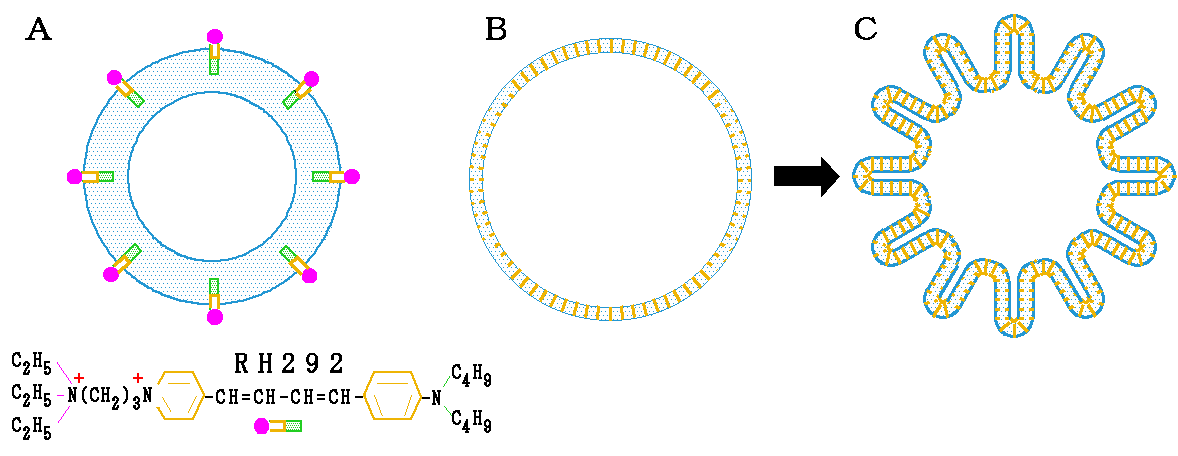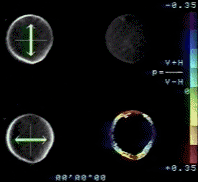|
Ca2+ Wave and Membrane Reorientation during Egg Fertilization
A fertilizing sperm attaches on the left of this sea urchin egg and initiates a Ca2+ wave (movie, top right). The egg membrane has been stained with the fluorescent dye RH292 (figure), which sticks into the membrane perpendicularly. The fluorescence from the dye is polarized along its long axis. Thus the fluorescence is vertically polarized when the dye is oriented vertically, and horizontal dye produces horizontally polarized fluorescence. We decompose the fluorescence into vertically (movie, top left) and horizontally (bottom left) polarized components. From the ratio of the two, we calculate the polarization and show it in false colors (bottom right); warm colors represent vertical orientations, and cold colors horizontal orientations. Before fertilization, the egg surface was smooth, and the dye orientations match the expectation in the figure, middle. Shortly after the passage of the Ca2+ wave, the egg membrane starts to reorient. This reorientation wave propagates at the same speed as the Ca2+ wave. Eventually, previously horizontal parts of the membrane (top and bottom of the egg) become vertical, and vertical parts become horizontal (left and right), indicating the formation of numerous microvilli on the egg surface (figure, right). The last part of the movie is sped up.
| |||||||

